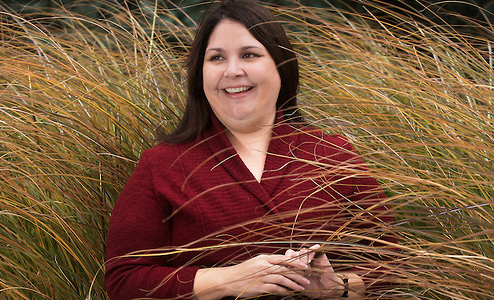by Dr. Laurie Arnold— Director of Native American Studies & Assistant Professor of History —
As Director of Native American Studies – Gonzaga University, I am often out in Native communities learning from local knowledge holders and participating in events, such as the October 10 celebration of Spokane’s first Indigenous Peoples Day. Sometimes my work also takes me further afield, which is how I came to attend a meeting at the White House in September.
Eighty university faculty were invited from institutions across the country to participate in conversations about President Obama’s Promise Zone initiative. The initiative supports place-based economic development informed by community values, with the intention that communities know their own needs best. There are 22 urban, rural, and tribal Promise Zones, and the Spokane Tribe of Indians is one of the four tribal Promise Zones.
I was invited to participate because of my role as Director of Native American Studies—of the eighty faculty present, only one other Native Studies director attended—but it was also important for me to realize how historians can and should participate in conversations about community growth.
Data is an important aspect of Promise Zone work. Federal institutions want tomeasure how this approach to economic development functions and succeeds. That means demographic and employment and education statistics and so on. Many faculty who participated in the meeting were economists and sociologists and anthropologists—social scientists who measure this data. Their scholarship is important, of course, but their methodologies differ from our work as historians.
For example, statistics tell us that only 9% of Native Americans have earned Bachelor’s degrees, compared to 19% of the overall American population. Historians’ inquiries into this question would reveal that nineteenth-century federal assimilation programs targeted Native cultures and languages, and sought to erase tribal identities and cultural distinctiveness. This process of erasure persisted in educational curriculum throughout the United States in the twentieth century. If Native Americans were discussed at all, we were characterized as peoples of the past, rather than as vibrant communities located throughout the U.S. Bearing this historical context in mind, it is easy to understand why Western-centered education works less well for Native American students, and why tribes develop their own educational models to support Native student completion of two- and four-year degrees. The Spokane Tribe has prioritized educational reform as one of their Promise Zone priorities and, if called-upon, scholars from across disciplines can collaborate to support the Tribe’s initiative. That’s why the White House gathered scholars with diverse scholarly and community-centered experience—to learn from each other in support of our Promise Zones.
Our history faculty consistently reinforce the varied career paths which are available to History majors. As a History major, I can tell you that I never thought I would participate in a White House conversation about place- based economic development, but in fact, I was the exact right person for the job. The courses I teach at Gonzaga are all centered in place-based learning about the Columbia Plateau. My scholarly research focuses on twentieth century federal Indian policy. I am an enrolled member of the Sinixt (Lakes) Band of the Colville Confederated Tribes and I grew up on the reservation. Taken together, each aspect of my background prepared me to offer cogent observations to leaders in the highest levels of government, and because of my professional training and professional roles, they listened to me.
The lesson I hope History majors will take from this ‘Dr. Arnold Goes to Washington’ account is this: Historians deserve a seat at every table. Without us, data works alone. With us, data creates a narrative of the present built on the past, with the power to influence the future.
“Dr. Arnold Goes to Washington!” was originally published in the History Department Newsletter. See the full newsletter here.
